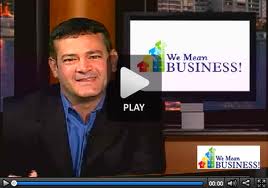E-Mail Etiquette with an Impact
 A couple of years ago, I felt compelled to write a testimonial letter. I had received remarkable service from a pair of business owners and it took an entire page to express my heart-felt gratitude. I e-mailed that letter, as an attached Word document, to both owners. Additionally, I included a request for their physical mailing address, so that I could provide them with a signed copy on letterhead. I waited and waited, but neither business owner ever replied. You can imagine how this left me feeling — Did they receive my e-mail? Do they regularly check their e-mail? Did they appreciate this rare gesture? I saw them several weeks later and learned that they did receive my e-mail. I don’t believe they are unappreciative — In fact, I imagine they probably share the letter with family, friends and prospective clients to this day.
A couple of years ago, I felt compelled to write a testimonial letter. I had received remarkable service from a pair of business owners and it took an entire page to express my heart-felt gratitude. I e-mailed that letter, as an attached Word document, to both owners. Additionally, I included a request for their physical mailing address, so that I could provide them with a signed copy on letterhead. I waited and waited, but neither business owner ever replied. You can imagine how this left me feeling — Did they receive my e-mail? Do they regularly check their e-mail? Did they appreciate this rare gesture? I saw them several weeks later and learned that they did receive my e-mail. I don’t believe they are unappreciative — In fact, I imagine they probably share the letter with family, friends and prospective clients to this day.
One popular study* shows us that communication (specifically as it pertains to likability) is comprised of the following 3 elements and respective weights: · 7% words · 38% voice tone · 55% body language
Now, since you don’t have your voice tone and body language embedded in standard e-mail communication, that leaves only your written words (a bunch of text on a screen). If your words only account for 7% of communication, that obviously leaves plenty of room for misinterpretation. There is a good chance that the recipient will insert a voice tone — and even some body language — for you.
Don’t leave an opportunity for a disconnect — often referred to in this context as a misunderstanding, misinterpretation and/or feeling of being incomplete.
Not having the last word in a back-and-forth e-mail communication, could easily be interpreted much like not saying “goodbye” at the end of a phone conversation. It is best to err on the side of communicating. Always have the last word.
 Non-question e-mails
Non-question e-mails
This best practice is not referring to only e-mails containing questions. The practice of replying to someone’s questions is clearly common courtesy, common knowledge … and common sense. However, when an e-mail does not contain a question, that is not granting us permission to not reply. In other words, it does not mean a reply is not warranted, important and/or appropriate.
You can always reply. It is always safe. This last word has the other person feel smart and/or important and/or valued — everyone’s three emotional hot buttons. It also leaves the other person feeling complete.
Why not always have the last word? — Here are some everyday applications:
1. Client says, “Thank You.” Reply with, “It was my pleasure, Jim.”
2. Client says, “Here is what I promised.” Reply with, “I wanted you to know that I received this. Thanks a bunch, Suzi! I appreciate you for remembering.”
3. Client sends you a link, article, etc. and says, “Thought you might be interested…” Reply with, “Thank you for thinking of me, Lowell.”
4. Client says, “You really did a great job for us and we are so grateful to have found you.” Reply with, “Thank you so much for the kind words, Paula. You made my day.”
Now put yourself in their shoes for a moment, with each of the above “Client says…” and consider how you, as the client, might be left feeling without any reply… If you’ll take just a moment to do this, you’ll clearly see and understand the impact of: Having the last word.
Just as importantly, if you know you won’t be able to respond to someone within about 24 hours, I recommend replying with something like this:
“I wanted you to know that I received this. I have a number of pressing obligations right now and should be getting back to you by ____________.”
This lets them know that you did see their e-mail, that you aren’t blowing them off and it sets an expectation on response time. Note: be sure to under-promise and over-deliver on whatever response time you commit to.
Having the last word on e-mail is one more best practice that makes a difference — although sometimes subtle — and has you operating at a level of impeccability that distinguishes you from everyone else. It is these subtleties that can also have you consistently connecting with your clients.
*http://en.wikipedia.org/wiki/Albert_Mehrabian
:: What do YOU think? ::
(If you don’t see “Share Your Thoughts” below,
simply click on this article’s headline at the top)
© Copyright 2011 to Present – Driven To Excel, Inc. All Rights Reserved.



















As a consultant, I deal with this every day and it’s extremely important to maintaining a healthy relationship with a client that all emails are followed up with and the last word is always coming from me, the business that the client has decided to patronize. It’s the small things that keep them coming back…a kind work, a small gesture…an understanding tone…
Well said, Benjamin! You’re practicing something that most people do not and you’re right … those little details make all the difference.